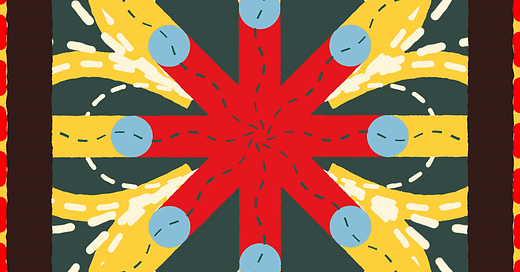You, like me, might have felt this:
We buy a course.
We get excited.
We say “this time I’ll do it.”
And two weeks later… it’s there, untouched.
It’s not about lacking discipline, sometimes we just didn’t have a plan.
Or we started aiming too high, or forgot to map time for it.
So I’ve been thinking about this.
How can we actually begin something new, like motion design, without falling into the same trap?
(P.S. I added examples and resources to make it easier to put some action.)
Let’s break it down below. 🧰
So… how would I recommend starting with motion?
First of all, lower the pressure.
Don’t expect polished results too early.
You’re entering a field with tools you don’t know yet, and concepts that take time to sink in. That’s fine. That’s how learning works.
Let’s first state that the base of the work of a Motion Designer, in general, is Graphic Design.
Most of you are probably designers that now want to put some motion to it. So, let’s start that way. But if you aren’t, you can easily download something from a source like Freepik or similar, to practice with that design.
I will dive below into different articles that contain suggestions based on your situation.
Start by taking something you’ve already made a poster, a layout, a UI screen, and ask yourself:
How would this move? And why?
This helps you get in the mindset of motion before opening any software.
Knowing how to use the tool won’t make your animation better.
The decisions behind what moves, when, and how, that’s what matters.
Want to practice this? I’ve written some things that might help:
A starting point with some easy exercises:
What I consider when I look at references and how to learn from them:
Okay, now the tool part (don’t worry, we are here)
We’re focusing on After Effects, the standard for 2D motion design.
Yes, it can feel massive. But you don’t need to learn it all. It's absurdly big.
So, start by understanding the panels, then what is a composition and how to create it, how to bring a shape to that composition and then the main transform options:
Position
Scale
A few key ideas on easing and timing
A good intro if you want to get a grip on it fast:
Start by opening a poster or layout in AE.
Don’t animate the whole thing, just try one or two moves.
That alone gives you more practice than watching 10 tutorials.
And trust me, you don’t need more resources to start your first exercises.
Then comes what really matters: fundamentals
These are the things that make motion feel natural, intentional, and clear. For example:
Easing (slow in / slow out)
Anticipation and follow-through
Visual rhythm
Contrast and balance
Motion hierarchy
If you already animate but feel your work lacks something, I’d bet it’s not more tools, it’s fundamentals.
I talked more about this here:
And also here
These principles come from traditional animation, not plugins or templates.
They’re what let you create motion that connects. That just feels better.
Bonus: what to do if you’re short on time
Let’s be real.
Most of us are juggling work, life, and learning.
So if your time is tight, start with this:
And if you’re overthinking where to begin:
You don’t need hours a day.
You just need a small system, and a reason to keep showing up.
What about a practice group?
The Practice File 🧰
So, this month I’ve started a motion practice group. Simple, and human.
Every month:
1️⃣ A monthly post with one exercise based on fundamentals (plus examples & references)
2️⃣ A group channel to share, ask, and give feedback
3️⃣ A reminder a few weeks later to keep you on track
4️⃣ A recap with selected work from the group (we build a shared practice journal)
It costs 9€/month and starts this June.
Also, if you refer 3 friends, your first month is free. Just share your Substack link.












Hey Awesome post!
not sure if you are aware but the link to ben marriots video on youtube takes us to a Neil Degrass Tyson video (equally as important and informative) but just giving you a heads up :)